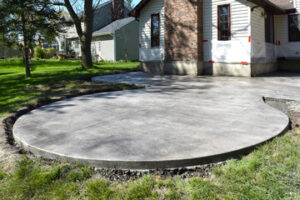Keeping off extra weight takes time, energy, and determination. But doing so can improve overall health and reduce the risk of serious illness.
Small changes over the long term are the best way to lose weight and keep it off. These include eating a healthy diet, reducing empty calories, and being physically active. Click https://houseofaesthetix.com/ to learn more.

Weight loss goals help you manage your expectations and monitor progress. However, unrealistic goals can lead to frustration and may even backfire. Whether you are trying to get to a healthy pre-surgery weight, lose weight after bariatric surgery or simply feel better in your clothes, setting realistic goals for yourself is important.
Start by identifying the reasons why you want to lose weight. Write them down and post them somewhere that you can see them daily. This will be a constant reminder of why you are making this change in your life. Using an app or writing in a journal to track your food, beverage, physical activity [PDF-127KB], sleep and emotions can also help you become more aware of your current habits.
The NHLBI recommends starting with a goal of losing at least 5% of your body weight. This is a realistic goal for most people, especially when you consider that achieving this goal can significantly reduce the risk of chronic health conditions.
To achieve a healthy and sustainable weight loss, you need to create a calorie deficit. This can be accomplished through consuming fewer calories or burning more calories. A calorie calculator can help you determine an appropriate daily calorie goal based on your height, age and level of physical activity.
Make sure your goals are SMART (specific, measurable, attainable, relevant and time-bound). Having small wins along the way will keep you motivated and allow you to build confidence toward reaching your long-term goal. A good example of a SMART goal would be walking 30 minutes each day for five days a week instead of just saying “I will walk more”. The specific details of the process are what helps you to develop new behaviors and habits that will support your desired outcome.
For decades, we’ve been taught that losing weight is a matter of simple math: Cut 3,500 calories a day and you’ll lose a pound a week. But experts are now saying that this antiquated advice is wrong. In fact, when you cut your calories too drastically, your body goes into starvation mode and slows its metabolism. This causes you to lose muscle and water instead of fat. And over time, this can have long-term negative consequences on your health and can lead to eating disorders.
Eating too few calories also slows down your digestive system and can lead to constipation. Additionally, it can cause nutrient deficiencies and exacerbate chronic illnesses such as autoimmune diseases and thyroid disease. Eventually, the diet may even lead to gout and other inflammatory conditions.
In addition to being unhealthy, eating too few calories can also make it difficult to stick with the diet. It’s common for people who cut their calories too much to hit a plateau, which can be very frustrating. And when they don’t see results, they often give up and go back to their old habits.
To prevent this from happening, you should only cut your calories by a healthy amount. For most people, this means a reduction of about 250 to 350 calories a day. If you’re not sure how many calories you should eat, talk to your doctor or registered dietitian. They can help you find a healthy, sustainable calorie reduction goal. You can also use a calorie-counter app or online tool to get an idea of your calorie intake. Just remember that these apps should be used as a guide and not a strict template for your diet.
A balanced diet provides your body with the right proportion of nutrients and energy. It helps prevent disease and enhances overall health. It contains the proper ratio of carbohydrates, proteins, fats or lipids, minerals, vitamins and other micronutrients. It also contains the correct amount of calories for your sex, age and activity level.
To eat a balanced diet, choose a wide variety of foods from the five core food groups: fruits, vegetables, grain products like bread, cereals and pasta, dairy products and their alternatives, protein rich foods like lean meats, eggs and fish and unsaturated fats such as nuts and seeds. Limiting processed food, added sugars, salt, saturated fats and trans-fats is also important.
It’s also a good idea to eat a lot of water as well. Aim for about 6-8 glasses per day.
If you are not eating a balanced diet, it can be difficult to lose weight or even maintain a healthy body weight. Crash diets that severely restrict calories are not a long-term solution and often lead to relapse. Instead, make gradual and permanent changes to your lifestyle. For example, by tracking your meals in a journal, you can become more aware of what you are eating and stop mindlessly snacking. Then, you can begin to gradually replace unhealthy foods with healthier ones and add in some moderate exercise. By doing this, you can achieve and sustain a healthy weight while improving your quality of life.
A full night of sleep is as important for weight loss and health as is a good diet. Getting enough rest boosts metabolism, helps regulate hormones and decrease inflammation. But for many Americans, sleeping well is a struggle. Some experts believe chronic sleep deprivation is as much of a barrier to sustainable weight loss as a diet high in fat and sugar.
The study involved 80 overweight adults who reported sleeping fewer than six and a half hours per night on average. Over the course of three years, those who slept longer than six and a half hours lost more weight and body fat than those who slept less. This may be because sleep deprivation throws the body’s hunger and satiety hormones out of whack, causing it to produce higher levels of ghrelin, the “hunger” hormone, and lower levels of leptin, which suppresses appetite. This can lead to cravings for salty, sweet or fatty foods.
Lack of sleep also interferes with the body’s ability to metabolize glucose, resulting in high blood levels of insulin and increased storage of body fat. It also reduces production of infection-fighting proteins called cytokines, so people who are sleep deprived are at greater risk for obesity, diabetes and heart and blood vessel disease.
To get the most restful sleep possible, keep a regular schedule and stick to it. Try to go to bed at the same time each night and wake up at the same time each morning, even on weekends. Make sure the bedroom is dark, quiet and cool, and turn off or silence your cell phone and TV at least an hour before going to bed. Avoid large meals, caffeine and alcohol before bed. A relaxing bath and reading are also a great way to wind down before sleeping.
Exercise is a powerful tool for weight loss. It boosts high-density lipoprotein (HDL), the “good” cholesterol, and decreases unhealthy triglycerides. It also increases energy levels and helps to reduce stress. But don’t rely on exercise alone — you must also make healthy food choices and create an overall calorie deficit.
If you struggle to find time to exercise, don’t worry. Regular trips to the gym are great, but so is being more active throughout the day, such as taking the stairs instead of the elevator or revving up your household chores. You can start small and slowly increase your activity level over time.
The recommends 150 minutes of moderate aerobic exercise or 75 minutes of vigorous activity per week for most adults. You can divide up this time into multiple sessions to fit your schedule, but it is important to be consistent for best results.
If you are new to exercise, start by aiming for a minimum of 30 minutes of physical activity daily. This can include walking, hiking, brisk cycling, swimming, dancing, playing sports, or even mowing the lawn. Slowly work up to the recommended amount of exercise, and focus on making it a long-term habit. It’s important not to overdo it at the beginning and hurt yourself. You’ll be more likely to stick with your workouts if you don’t burn yourself out too quickly.



